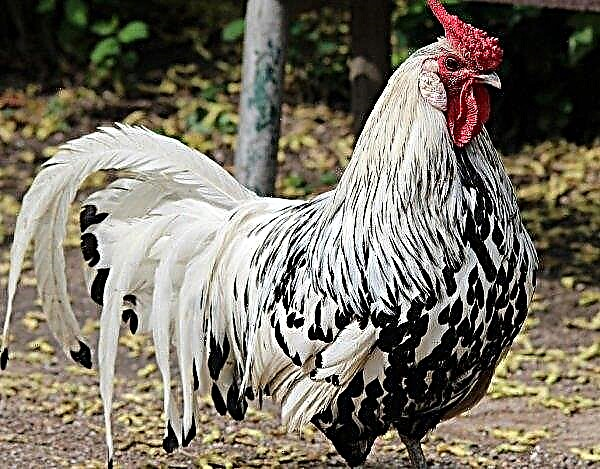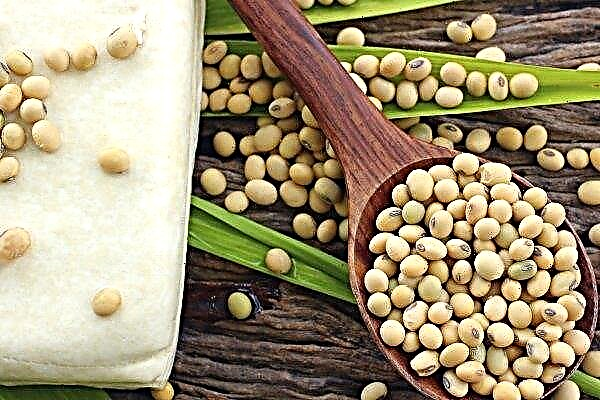Many would like to grow an evergreen, sophisticated beauty - spruce on their plot. But growing a tree from scratch is quite difficult and long, so gardeners resort to transplanting grown spruce from the forest. How to do this correctly and what needs to be taken into account in the process will be discussed later.
When is it better to transplant spruce
In order for a young Christmas tree from the forest to take root safely, you need to choose the right time for a transplant. The success of rooting in a new place depends on the processes occurring in the root system.
The roots begin to grow rapidly in the spring, and the process of vegetation ends by the end of summer and the beginning of autumn. It is ideal to transplant a tree in early April, when the soil has already thawed, but intensive growth has not yet begun, and in mid-August.
Important! Trees with a height of 3 meters and above can be replanted only in the winter months, with a frozen lump of soil around the root.
How to choose a good tree
In order for the plant to adapt without problems at the summer cottage, you need to correctly approach the choice of seedling. Spruce should be young, strong and healthy. The experience of foresters confirms that freestanding trees that have grown at the edge of the clearing, along the side of the road, as a rule, have stronger immunity and take root well in their summer cottage.

Best for planting in the country are young specimens, 50-100 cm high, with evenly growing symmetrical branches, healthy needles and a trunk. You need to carefully inspect the plant for damage and check for serious defects.
What you need for a tree transplant
In order for the spruce transplant to go right and easy, you need to prepare.
In the process you will need:
- garden shovel;
- a piece of cotton fabric measuring 1 m² in order to wrap the root;
- color tape for marks on a tree trunk;
- canister with water (10 l);
- a large bag or bag for soil;
- rope to tie the seedling for transportation.
It is better to dig a hole on the site in advance, so that after transportation immediately plant a tree.
Did you know? In the Komi Republic, a unique multi-stemmed spruce grows; according to preliminary estimates, 11 trunks grow from one root.
Digging process
When the coniferous beauty for transplantation is selected, you can begin to dig it out. In the process, care must be taken not to damage the tree.

Extracting involves several steps:
- It is necessary to water the plant under the root in order to soften the soil and facilitate digging. After watering, you need to wait at least half an hour so that the water is absorbed.
- In parallel with the previous stage, it is necessary to mark the trunk of the tree with a small piece of tape or colored tape: it should be noted which side of the trunk is facing south and which is north. This is necessary in order to plant a tree in the country just as it was located in natural conditions.
- Mark the area around the trunk, departing from it 50–70 cm. You can do this with a shovel, digging a small depression in a circle. If the height of the tree is above 1 meter, then the indent should be greater than at least 1 meter.
- Slowly deepening the dug ditch, remove the plant from the soil along with a large earthen lump, carefully lift and lay the fabric prepared in advance under it. Wrap the root and tie its ends. Now the tree is ready for transportation to a new place.
Important! Young spruce is better adapted to new conditions, if you take a little soil from its habitat and add it to the pit when planting on the site. It is recommended to remove the upper, most fertile layer.
Tree transportation
To safely deliver the dug spruce to the infield, you need to follow the simple rules for transporting seedlings:
- preserve the earthen lump and ensure its integrity with the help of moist breathable fabric (cotton, burlap);
- tie the branches of the plant with a rope, slightly pulling them to the trunk to avoid damage;
- transport on a horizontal or inclined surface so as not to damage the barrel;
- transport as quickly as possible so that the tree loses a minimum of nutrients.

Transplant location selection
Perhaps the most crucial moment is the choice of a place on the garden plot where you have to plant forest spruce. Before deciding where the tree will look beautiful and appropriate, you need to familiarize yourself with the basic rules of agricultural technology.
Conifers are very unpretentious to the composition of the soil. They grow best on sandy soil, but they feel quite good both in chernozem and loam. The most important requirement is good drainage, since water stagnation is detrimental to the roots of spruce.
Lighting the area is important, the top of the tree will tend to light, if at the same time the lower part of the plant will be in the shade, then the trunk below will remain without branches. It is important to ensure uniform lighting. It is worth remembering that small seedlings need to be protected from direct sunlight, creating an artificial shadow with the help of trellises or a canopy.
When choosing a place, you should also take into account the proximity of the tree to plants. Conifers, as you know, greatly deplete the soil, so you should avoid planting spruce near fruit trees or shrubs.
 In addition, the root system of the tree grows to quite impressive sizes, so you need to plant it at a distance of at least 15 meters from the house and other buildings.
In addition, the root system of the tree grows to quite impressive sizes, so you need to plant it at a distance of at least 15 meters from the house and other buildings.
Landing process
So, the place has been chosen, followed by another serious task: to transplant the plant, providing it with optimal conditions for growth.
It has already been mentioned above that a pit for landing must be prepared in advance. Usually, for young fir trees, they dig a hole with a diameter of 70 cm and the same depth, pour drainage to the bottom and pour a little water so that the soil softens.
The brought sapling along with the burlap with which it is tied is placed in a hole and sprinkled with earth. After installation of the root, the fabric must be untied and left in the thickness of the earth: over time, it will naturally disintegrate, but for now it will maintain the familiar environment for the roots. Together with the soil, soil brought from the forest is filled into the pit.

After planting, the tree is watered, the trunk circle is mulched with needles (for its absence, ordinary sawdust can be used). Watering in the first weeks, while the tree is taking root, is carried out regularly, without waiting for the soil to dry, pouring 10 liters of water under one plant. It is important to consider that you need to water the spruce not under the base of the trunk, but in a circle, at a distance of 30–40 cm from it.
Video: Transplanting spruce from the forest to the site
Is it possible to transplant a large tree
Many gardeners do not want to grow spruce from a small seedling, so the question naturally arises, is it possible to transport an adult plant from the forest and how to transplant it.
Biologists say that adult conifers take root during transplantation from the forest area much worse than young trees. Their complete rooting takes at least three years, while the first year is the most difficult in terms of plant conservation.
Did you know? Spruce wood is considered resonant due to the uniform distribution of fibers. That is why it has been used since ancient times in the manufacture of various musical instruments, it is believed that they sound in a special way.
If a decision has been made to plant a large-sized tree (tree, with a trunk diameter of 8 cm or more), then it is better to give preference to fir trees from special nurseries. This is due to the fact that there they undergo multiple transplants, and by the time of acquisition they already have a rather impressive and strong root system.
 Regardless of whether the spruce is taken from the nursery or dug up in the forest, it is recommended to resort to the help of special means and vehicles. The maximum permissible height of an adult plant selected for transplantation should not exceed 12-13 meters (the higher the tree, the more difficult it is to adapt to the site).
Regardless of whether the spruce is taken from the nursery or dug up in the forest, it is recommended to resort to the help of special means and vehicles. The maximum permissible height of an adult plant selected for transplantation should not exceed 12-13 meters (the higher the tree, the more difficult it is to adapt to the site).
Thus, having studied the main features of transplanting forest spruce to a personal plot, we can conclude that this unpretentious plant is quite capable of taking root in the country. The key to success in this process is compliance with the rules of digging, transportation and adaptation of the plant to new conditions.












